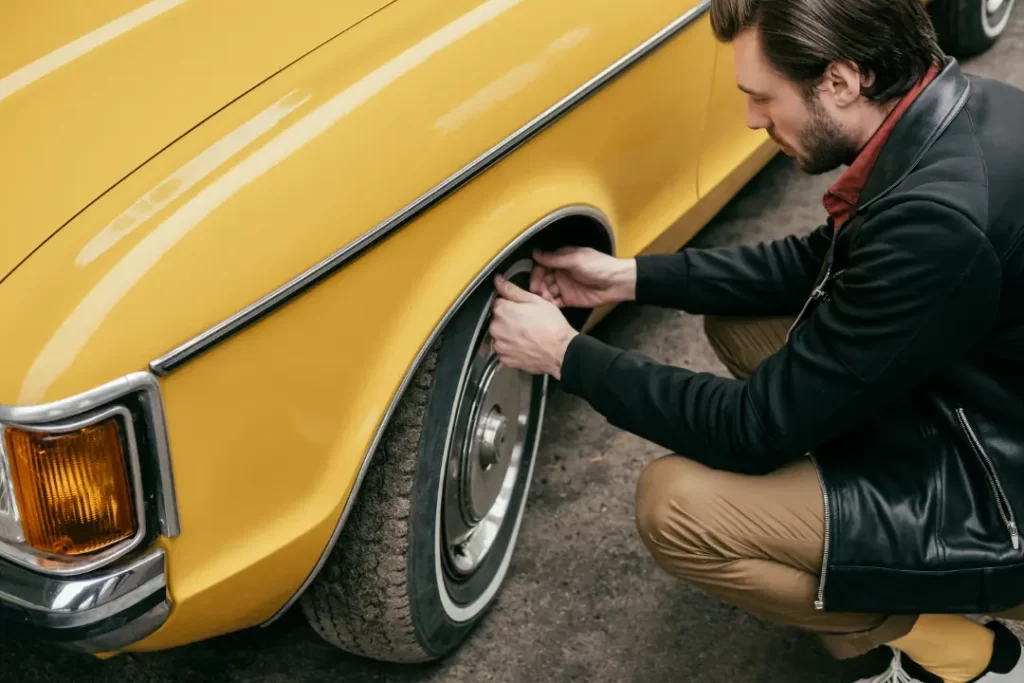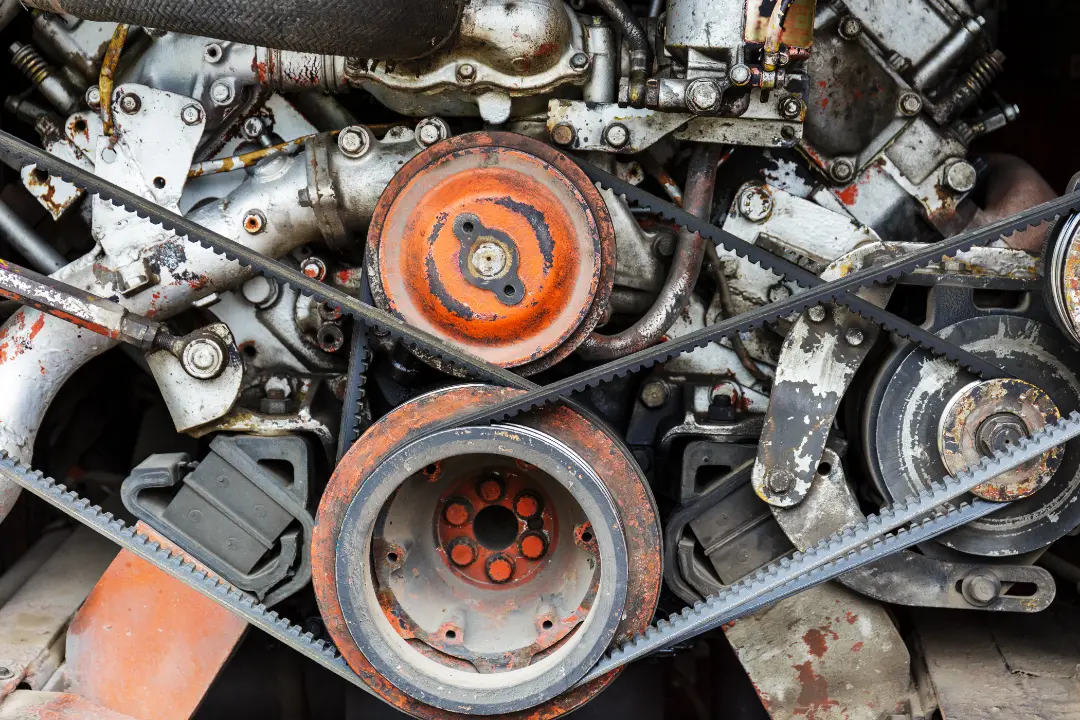Did you know that classic vehicles first registered over 40 years ago can skip the mandatory annual MOT test if they remain unaltered? Many historic car owners are unsure about which vehicles qualify for this exemption and how to ensure their vehicles are roadworthy without a certificate.
In this guide, you will learn about the 40-year exemption rule, what constitutes “substantial changes,” the reasons for voluntary MOTs, practical pre-inspection tips, insurance and road tax implications, upcoming regulation changes, and how to book your classic car MOT or safety check at All Vehicle Services in Sittingbourne.
By understanding these details, you can keep your vehicle’s authenticity, meet DVSA requirements, and get professional help for all your maintenance needs.
Key Takeaways
- Classic vehicles that are over 40 years old may qualify for an MOT exemption if they have not been significantly changed.
- You must declare the exemption when taxing the vehicle, either online or using a V112 form at the Post Office.
- Significant changes to key systems such as the chassis, engine, suspension, or axles can remove exemption status.
- Even vehicles that are exempt must stay roadworthy by law. There are fines and penalties for unsafe use.
- Voluntary MOTs and regular safety checks help maintain value, meet insurer requirements, and provide peace of mind.
- All Vehicle Services in Sittingbourne offers expert MOTs, safety checks, and servicing for both classic and modern vehicles.
What Is the 40-Year MOT Exemption Rule for Classic Cars?
In the UK, certain classic cars are exempt from annual MOT testing once they are over 40 years old and have not been “substantially changed.” This rule, introduced in May 2018, aims to ease the burden on historic vehicle owners while keeping authenticity intact.
For instance, a 1982 Jaguar Series 3 with its original engine and chassis became eligible for exemption in 2022, as long as it hadn’t undergone major changes.
To claim the exemption, the owner must declare the vehicle as a Vehicle of Historic Interest (VHI) when taxing it. This can be done online or with a V112 form at a Post Office. Although MOT testing is not necessary, the law still requires the vehicle to be roadworthy at all times. There are penalties if it is found to be unsafe.
This approach lets enthusiasts enjoy their vehicles without needing yearly tests while still ensuring safety and preserving the history of motoring.

How Does the 40-Year Rule Affect Classic Car MOT Requirements?
The 40-year rule eliminates the legal requirement to bring qualifying historic vehicles for annual testing. This shifts the focus from certification to the owner’s responsibility for road safety. By exempting vehicles over 40 years old, the DVSA promotes preservation instead of modification.
This allows enthusiasts to spend more on maintenance rather than compliance. Understanding this change shows how classic car care priorities change once a vehicle qualifies for exemption.
What Are the Eligibility Criteria for MOT Exemption on Historic Vehicles?
To qualify for MOT exemption in the UK, a vehicle must meet the following criteria:
- It was first registered more than 40 years ago.
- It has not been substantially changed in the last 30 years (changes before 1988 are generally ignored). Substantial changes include alterations to the engine, chassis, axles, or suspension that differ significantly from the original specification.
- The owner must declare the exemption when taxing the vehicle, either online or using a V112 form at the Post Office.
Meeting these criteria ensures the vehicle is recognised as a Vehicle of Historic Interest (VHI) and is exempt from MOT testing, though it must still be kept in a roadworthy condition at all times.
What Counts as a “Substantial Change” That Affects Classic Car MOT Exemption?
The DVLA defines “substantial changes” as significant alterations to a vehicle’s critical systems, which can remove its MOT exemption if they alter its original specification. The rule ensures that only vehicles that remain close to their historic design qualify.
Below is a breakdown of key components and the types of changes that affect exemption status:
| Component | Example of Modification | Effect on Exemption |
| Chassis or Monocoque Bodyshell | Replacement with a non-like-for-like pattern | Exemption lost. Like-for-like replicas do not count as substantial. |
| Engine | Change in cylinder configuration, or fuel type (e.g. petrol to diesel or electric) | Exemption may be revoked. Same basic type usually acceptable. |
| Suspension & Steering | Converting to a modern or different design (e.g. leaf springs to coilovers, recirculating ball to rack-and-pinion) | Exemption lost if geometry or operation differs significantly. |
| Axles & Running Gear | Fitting axles of a different pattern, not compatible with the original system | It requires MOT as the original specification has been altered. |
How Can Classic Car Owners Check for Substantial Changes?
Classic car owners are responsible for determining whether their vehicle has undergone “substantial changes” that affect the MOT exemption. The DVSA provides detailed criteria covering engines, chassis, suspension, steering, and running gear to help keepers make this assessment.
If you’re uncertain, you can seek advice from a specialist workshop or classic car club, but the final responsibility remains with the owner. Keeping clear records of modifications and referring directly to the DVSA’s published guidance ensures compliance and reduces the risk of disputes.
Acceptable Modifications That Do Not Affect Exemption
Not all repairs or replacements threaten the historic vehicle MOT exemption. The DVSA makes it clear that like-for-like work and routine maintenance are acceptable. These preserve a vehicle’s originality without being considered “substantial changes.”
Examples include:
- Replacing brake pads, discs, or drums with parts of the same type and specification.
- Repairing or renewing body panels with metal sections that match the original design.
- Installing replacement wiring looms built to factory design without increasing electrical output.
These sympathetic restorations maintain the vehicle’s historic character while ensuring it remains roadworthy and legally exempt from annual MOT testing.
When Is a Voluntary MOT Recommended for Classic Cars?
Owners often opt for a voluntary MOT to:
- Validate roadworthiness before long journeys or track events.
- Identify hidden defects early to prevent roadside failures.
- Maintain comprehensive service records for insurance or resale value.
Voluntary testing promotes confidence in a classic car’s condition and highlights issues that routine maintenance may overlook.
Legal Responsibilities for Roadworthiness Without an MOT
Even when exempt, classic car owners must:
- Ensure tyres meet tread depth and structural requirements.
- Keep steering, brakes and lights in safe working order.
- Maintain structural integrity to prevent hazards.
Failing to uphold roadworthiness can lead to fines, points or prosecution, as safety obligations remain unaffected by exemption.
What Happens If a Classic Car Fails a Voluntary MOT?
If you put an MOT-exempt classic through a voluntary MOT and it fails, the defects are logged on the DVSA database. Any “dangerous” or “major” faults must be repaired before the vehicle can be legally driven on public roads, even though the car remains officially exempt from compulsory MOTs.
Owners can request a partial retest once repairs are complete, usually at the same garage within the standard timeframe. Fixing issues quickly not only restores road safety but also helps protect the car’s long-term condition and market value.
How to Prepare Your Classic Car for an MOT Test or Safety Check
Thorough preparation increases the chances of passing a voluntary MOT or safety inspection. It helps you spot and fix common failure points before you book.
Before you present your vehicle, check these key items:
- All lights and indicators work correctly and have clear lenses.
- Brakes respond evenly without any noise or vibration.
- Tyre tread depth is 1.6 mm or more across the central three-quarters.
- Steering operates smoothly and has no excessive play.
- Visible fluid leaks are fixed or contained.
Completing this checklist prevents simple failures and gets your car ready for a more detailed inspection.

What Are the Most Common MOT Failure Points for Classic Cars?
Generally, the most common MOT failures across all vehicles are lighting, suspension, brakes, tyres, and visibility issues.
However, for older or classic cars that undergo voluntary MOTs, corrosion in structural areas, deteriorated wiring, and fluid leaks are frequent problems reported by garages.
Routine servicing that includes oil changes, brake adjustment and suspension lubrication ensures systems perform reliably. Scheduled preventive maintenance uncovers early wear before it becomes a safety hazard, reducing voluntary MOT failures and preserving vehicle authenticity for future generations.
Choose All Vehicle Services for Your Classic Car MOTs in Sittingbourne
When it comes to looking after your classic car or booking a trusted MOT in Sittingbourne, All Vehicle Services is the name local enthusiasts rely on. We are a dedicated team that understands the difference between maintaining a daily runabout and preserving the character of a treasured historic vehicle.
Our specialist technicians combine decades of hands-on experience with the latest DVSA-approved diagnostic tools, ensuring your car gets the perfect balance of modern safety and old-school craftsmanship.
From voluntary MOTs to routine servicing and specialist safety checks, we deliver the thorough, reliable, and affordable service that keeps your pride and joy both roadworthy and authentic.
Choosing us means choosing peace of mind, unbeatable value, and the assurance that your vehicle is always in expert hands.
With our reputation for quality, value, and customer care, All Vehicle Services has become the go-to destination for motorists across Kent. Whether you’re bringing in a classic Jaguar for a voluntary MOT, a family hatchback for its annual test, or a cherished weekend car for a safety check, you’ll always receive the same high standard of service. Book your MOT or safety check with us today and discover why so many drivers trust us as their long-term garage.
How Do Classic Car MOT Changes Affect Insurance and Road Tax?
MOT exemption does not eliminate your duty to keep a vehicle in good condition. Insurers often require proof of a vehicle’s condition, particularly for classic cars. They may ask for voluntary MOTs or independent inspections.
While the exemption itself does not directly influence premiums, keeping inspection records can help support agreed-value policies and show that you take care of the vehicle.
Vehicle excise duty (road tax) is different. Most vehicles over 40 years old fall into the “historic vehicle” tax class and do not pay VED, as long as the owner applies for this status with the DVLA.
Frequently Asked Questions
How Does MOT Status Influence Road Tax for Historic Vehicles?
Vehicles over 40 years old that are registered with the DVLA as “Historic” are usually exempt from Vehicle Excise Duty (road tax). Owners must apply for this tax class, and ensuring the V5C logbook is updated prevents unexpected charges.
Do all cars over 40 years old automatically qualify for MOT exemption?
No. The car must be at least 40 years old and not have had significant changes to its main systems. The owner must also declare the exemption with the DVLA.
What happens if my exempt classic car fails a voluntary MOT?
If major or dangerous faults are found, they must be fixed before the car can be legally driven, even if it is MOT-exempt.
Can I still get my classic car MOT tested even if it’s exempt?
Yes. Many owners choose to get voluntary MOTs to check safety, keep records for insurers, and find hidden problems early.
What Should Owners Know About Maintaining Insurance Compliance?
While MOT-exempt, classic vehicles must still be roadworthy by law. Many insurers request evidence of upkeep, such as voluntary MOTs, safety inspection reports, or maintenance records. Owners should also declare any substantial modifications. Clear documentation helps avoid coverage disputes.
What Did the 2018 MOT Exemption Law Change Involve?
In May 2018, the UK introduced a rolling 40-year MOT exemption, replacing the older fixed pre-1960 cut-off. This allows more vehicles to qualify as they reach the 40-year mark, provided they have not undergone “substantial changes.”
Conclusion
Classic car MOT exemptions make ownership easier and help preserve historic motoring heritage. However, roadworthiness is still a legal responsibility. Owners must take proactive steps to maintain safety and compliance.
Voluntary MOTs, pre-inspection checks, and expert servicing protect your vehicle’s authenticity and build trust with insurers and buyers.
At All Vehicle Services in Sittingbourne, we understand the need to preserve originality while ensuring reliability.
Whether you own a cherished Jaguar, a vintage Mini, or a modern daily driver, our team offers MOTs, voluntary inspections, and specialised servicing. We keep your car safe, compliant, and running well. Book with us today for reliable care.


